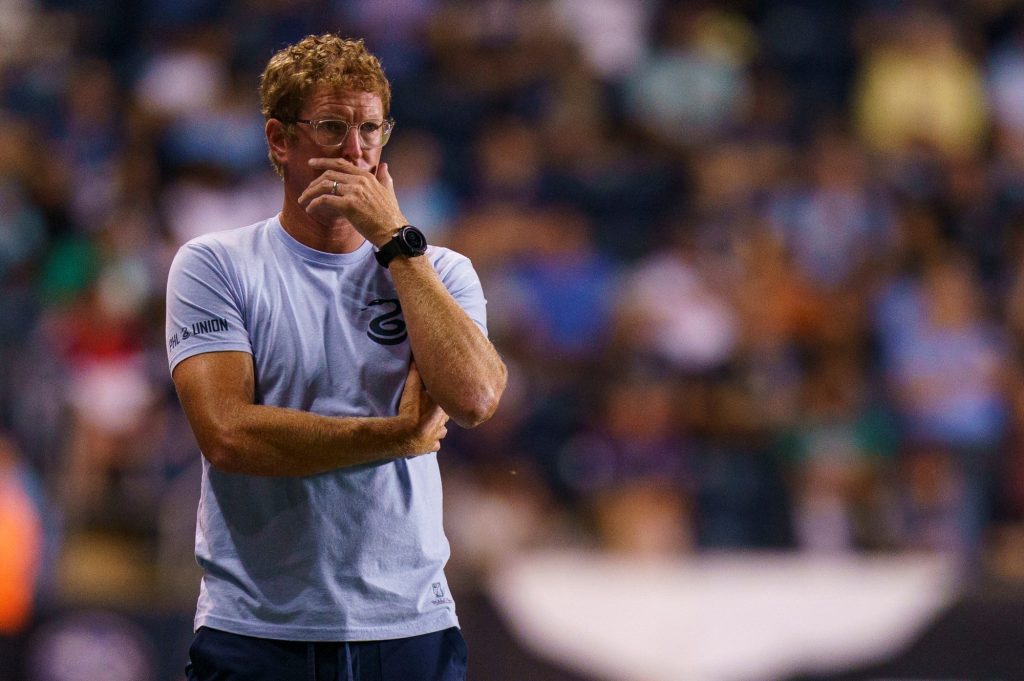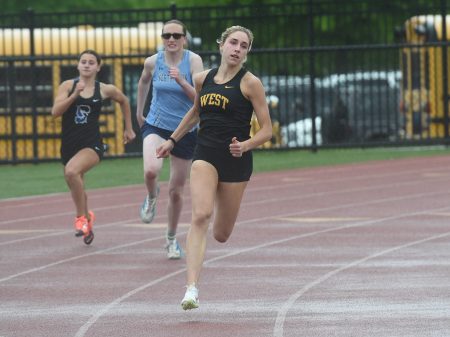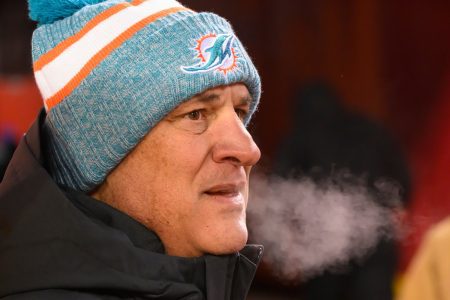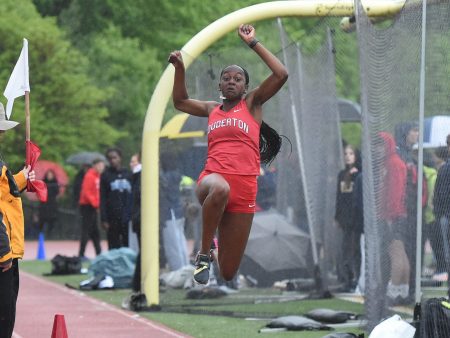CHESTER – The Philadelphia Union did a lot of things on Saturday night that they hadn’t been doing during their recent struggles.
They scored first, for only the fourth time in 11 matches. They got two penalty kicks after only getting one in the first 10 games. They took 29 shots, enough to get a result on their home ground.
But all those opportunities given by a desperate and disorganized Orlando City were still not enough in a 3-2 Union defeat.
The Union now have a 1-3-1 record in MLS play at Subaru Park this year and a 1-3-3 record in all competitions.
To understand how unusual that is, consider that the club had a 37-3-15 record at home from late 2021 through the end of 2023. The number of losses in the past two months is equal to the losses suffered in over two years.
The question for coach Jim Curtin and the club is why. What explains the sudden decline for a team that had been consistently successful for years?
Here are three obvious problems, and one glimmer of hope.
Games are too open
The Union are playing games that are too open for their players to handle.
In 2024, they average 14.6 shots per game and 4.9 shots on target per game. On its own, that’s not a bad thing. The Union rank seventh in MLS in shots per game and 11th in shots on target.
However, the way the Union play has led to a more open game. When the Union are at their best, they are ruthlessly converting a few significant opportunities. A higher number of chances by a counterattacking team creates vulnerabilities for the opponent to exploit.
The Union’s shots per game have increased over the last two years: from a relatively consistent 13.0 shots per game in 2023 and 12.9 in 2022. Their shots on target were 3.9 per game in 2023 and 4.9 in 2022. That latter figure is a reflection of exceptionally high finishing that year.
The downside of all those extra chances is the higher number of chances conceded. The Union allowed opponents 11.4 shots and 3.5 shots on target per game last year. These numbers have risen to 12.1 and 4.5 this year. They allowed 12.6 and 3.6 in 2022.
A combination of more shots and regression in goal due to Andre Blake’s injuries has led to a lot of goals conceded. The Union have allowed multiple goals in each of the last five games. This hasn’t happened since a run of six straight from March 11 to April 22, 2017.
This aligns with…
There’s no second option
The Union are giving up numerous chances because they’re not controlling game situations. Partly, it’s because of conceding first. But it’s also because when they need to create chances, they only know one way to do it, and that way extends games.
Curtin often says that the Union don’t care about possession. But opponents have realized that the way to make things difficult for the Union, especially in Chester, is to sit deep, give them the ball, and challenge them to break through, which remains a weakness.
The Union rank 20th in MLS in possession… a number they probably want to be lower, as they don’t do enough with the ball, ranking 26th in passing percentage. Therefore, on nights like Saturday, when Orlando kept the Union out of the middle of the field, luring them into low-percentage crosses. Opponents get away with that because the Union don’t have anyone who can take on an opponent one-on-one.
They are so far behind everyone else that it’s a problem.
The Union are at the bottom in total dribbles and successful dribbles. They average 3.8 successful dribbles per 90 minutes. Toronto, which is leading the league, is at 10.2. Vancouver, ranked 28th in the league, is at 5.3. The Union are also last in attempted take-ons, successful take-ons, and take-on success rate.
Even though the Union are better in some important categories than the results show — sixth in shot-creating actions per game, and fifth in expected goals per 90 — they've achieved this by stretching games, which has made them vulnerable at the back.
The team doesn't have a good enough roster.
If the Union continue to perform below expectations (although the sample size is small), then people will wonder why. One possible answer is that the roster is not deep enough.
Ernst Tanner previously created one of the best rosters in MLS through some great scouting and trades. But he has failed to build on that. Here are the club’s last four transfer windows:
January ’24: Oliver Semmle, Markus Anderson, Sanders Ngabo, Jamir Bedercio
Summer ’23: Tai Baribo, Olwethu Makhanya
January ’23: Andres Perea, Damion Lowe, Joaquin Torres
Summer ’22: Richard Odada, Abasa Aremeyaw
They've managed to get only one regular player (Lowe). So when Julian Carranza is suspended, as he was on Saturday, the Union have few options.
Or when players go away for international duty, it’s a struggle.
To connect to the second point, the Union tried and failed with Torres to fill the possession-oriented, change-of-pace role left by Ilsinho’s retirement. They've since apparently given up on that.
There’s been some internal refreshing of the squad.
Jack McGlynn and Jesus Bueno strengthened the midfield last season. Quinn Sullivan's improvement has had a similar impact this year. Maybe David Vazquez or Cavan Sullivan can do the same in the future.
Given the money spent on Sullivan and the recent track record, it’s unlikely that a high-impact signing is on the way. But the rest of the league has caught up to a team that hasn’t significantly improved since losing the MLS Cup in 2022.
A glimmer of hope
The Union’s struggles, in some ways, are unprecedented until before 2018, a period over which the Union have been the best team in points per game. But there is a recent echo.
Last year, during the CONCACAF Champions League, the Union started 2-1, then went winless in five games. They responded with wins in seven of eight.
That could happen this year, too. The locker room remains united. The team has been strong in getting results even when not playing well.
But without major adjustments — in formation and personnel — the margins will remain very small, as long as the Union’s ownership is in the bottom 25% for spending power. Things may start going their way. Losses may become draws and the draws wins.
But continuing along the same path won’t change the underlying and deeply ingrained flaws.
Contact Matthew De George at mdegeorge@delcotimes.com









